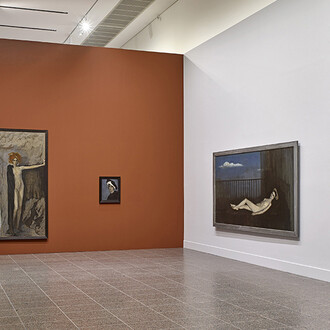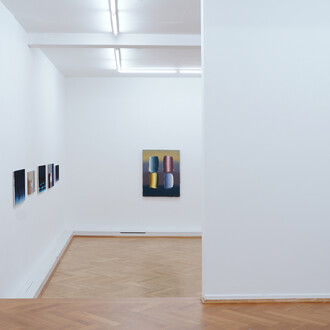It is not easy to talk about Dorota Jurczak's art, since her paintings and sculptures do not - as is customary today - refer to current discourses or illustrate themes that society considers relevant. In fact, the works do not need an explanation, because they directly address the viewer and transfer them into another world. This does not mean that Jurczak's works are naive or primitive, much sooner they are literarily informed.
Jurczak is a legendary reader. When she read Marcel Proust's "In Search of Lost Time", she did so in an almost performative way, so focused that nothing else seemed to matter during her reading. For a few weeks she disappeared completely from the present and plunged into Monsieur Swann's world.
So it is not surprising that Jurczak's etchings reference fantastic literature. The whimsical and bizarre as well as a tendency towards escapism are essential features that connect her work with this literary genre. Hence, Jurczak finds herself within a certain tradition. For example, the artist Alfred Kubin authored not only his etchings but also the novel "The Other Side", which tells of a secret fantastic kingdom. Also worthy of mention are the books of Raymond Roussel which were worshiped and revered by the Surrealists and had a strong influence on Dorota Jurczak.
Many of her portraits and busts are titled "Denton" or "Alfred". With the appropriate background, one can complete the surnames Welch and Jarry and decode them as references to protagonists of world literature. Alfred Jarry's mustache haunts many faces in Jurczak's pictures. Literature, imagination and empathy are some of the most important sources from which the artist draws her images and figures.
In 2006, Jurczak was invited by Maurizio Cattelan to show her etchings at the 4th Berlin Biennale "Of Mice and Men". Since then, she has been considered one of the artists who rehabilitated the medium within contemporary art.
In her new series of etchings, which are shown for the first time at Sies + Höke, a general bedriddenness seems to predominate. Whether it is idlers or illness leaves them lying down remains unclear. Again Denton Welsh comes to mind, who wanted to be a painter and not a writer, and who was bedridden following an accident. Another depicted person sleeps and seems peaceful, seemingly a successful escape into the dream world.
In her pictures and etchings naturalistic heads melt into reduced basic forms; birds turn into drops, busts into cup-like monuments. It is like a reverse pareidism - the tendency to recognize faces in all sorts of everyday objects, such as sockets. One also thinks of Brancusi's reductions, or how Fatima Hellberg once wrote about Jurczak's work: "Jurczak's figuration indicates how much - or rather - how little it takes to evoke the mind and idiosyncrasy of a being."
Jurczak's imaginations pose the question of what art can and should do. Beyond discourses and theories, she presents art as something fantastic, as a place that is better, more beautiful, and more fabled than the digitized here and now.
















